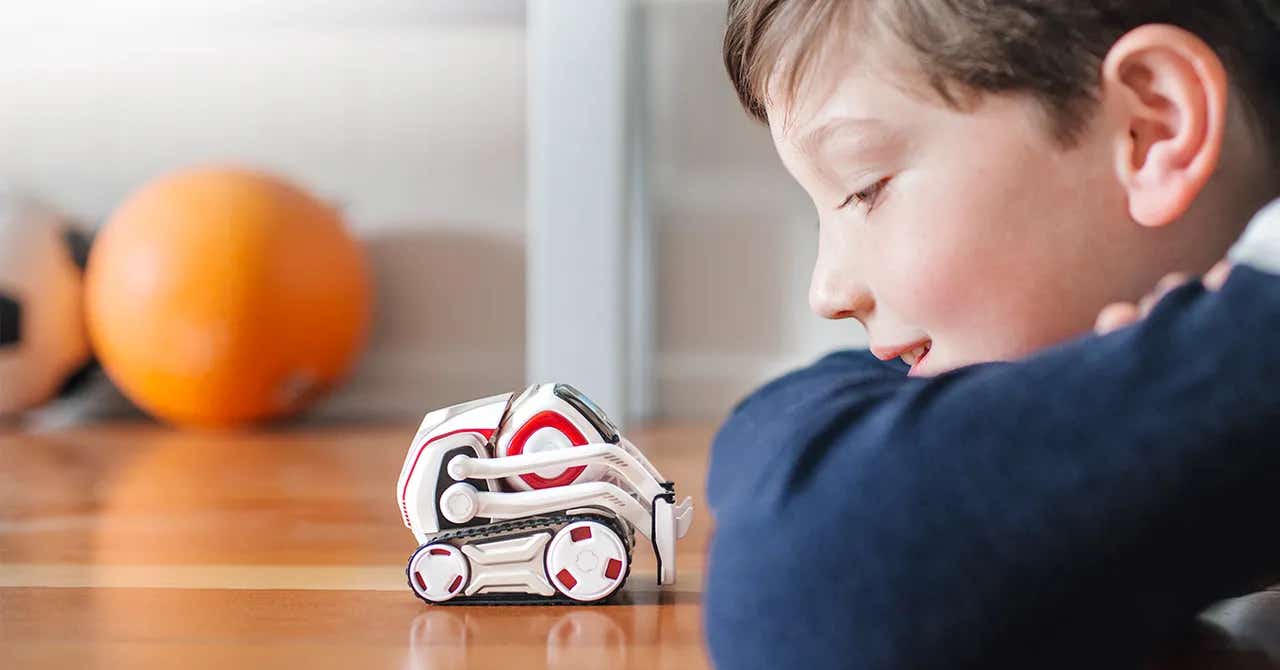Scientists discover the secret to making robots seem real
A toy robot named Cozmo helped researchers show how simple games can make machines feel human by triggering the brain’s sense of agency.

A playful toy robot convinced people it could think, showing how social interaction changes our view of machines. (CREDIT: Anki Inc.)
Robots are showing up in more places than ever before. From hospitals to homes, workplaces to classrooms, machines with artificial intelligence are becoming part of everyday life. But even as they roll, glide, and speak their way into human environments, one important question remains: can they ever become part of our social world? A recent study suggests they can—under the right conditions.
Researchers at the University of East Anglia (UEA) explored this idea using a robot named Cozmo. Unlike the humanoid robots you might see in science fiction, Cozmo is a small, box-shaped toy robot. It doesn’t look human, and it doesn’t talk in complex sentences. Yet it has the ability to move, react, and interact. The team wanted to understand whether people could see Cozmo as something more than a machine—and what it would take to make that happen.
Playing With Robots Can Change Your Mind
In the study, over 100 people interacted with Cozmo. Some were asked to play a simple social game with the robot. Others performed mechanical tasks, like moving the robot or observing it perform routine functions. The difference in how people reacted was striking.
Those who had played with Cozmo were more likely to treat it like a social being. They saw it as capable of making its own decisions. They even started to perceive its actions the same way they would view human behavior.
This effect was tested through a concept known as “temporal binding.” It refers to how people sense time between a cause and its effect. When someone acts and sees a result, they often judge the time gap as shorter than it really is. This shortened sense of time reflects a feeling of agency—the belief that you caused something to happen.
Psychologists know that people experience this binding effect more strongly when watching other humans act. The researchers wondered: would that same feeling appear when watching a robot? The answer was yes—but only if the robot had been introduced in a social way.
Related Stories
When Robots Feel Like They’re Thinking
Lead researcher Dr. Natalie Wyer, from UEA’s School of Psychology, explained the thinking behind the study. “Robots and AI are fast becoming fixtures in homes, hospitals, and workplaces,” she said. “We wanted to better understand whether people can interact with robots in the same way as they would with other humans.”
Dr. Wyer and her team found that context played a key role. Simply being near a robot wasn’t enough. It had to feel like the robot had a mind of its own. That sense of independent thought changed the way participants perceived the robot’s actions.
“When people interact socially with a robot,” Dr. Wyer said, “they begin to perceive its actions more like they would those of a human.” That shift in thinking is what allowed the temporal binding effect to kick in. People felt like Cozmo’s actions were meaningful and connected to intentions—even though it’s a robot.
In contrast, people who only completed mechanical tasks with Cozmo did not experience the same shift. They judged time more accurately and did not show the same signs of vicarious agency. The robot remained, in their minds, just a machine.
Social Robots Could Become Everyday Partners
This research points to something deeper about human psychology. We are wired to connect with others. When a robot behaves socially—even in a limited way—it can trigger those same mental pathways. That can be important in settings where robots work alongside people.
Think about a robot in a hospital helping patients or one in a store answering questions. If people see the robot as simply a tool, they may not trust it or respond warmly. But if the robot can engage socially—even just a little—it might feel more like a partner than a product.
This could be especially useful in elder care, education, and customer service. In those fields, robots aren’t just performing tasks—they’re part of conversations and relationships. Dr. Wyer’s research suggests that a small social interaction, like a game or playful exchange, can open the door to seeing robots differently.
It's Not Just Looks That Matter
One of the more surprising parts of the study was that Cozmo isn’t human-like in appearance. It has no face, no arms, and no voice like a person. Yet people still started to see it as more human after a short social game.
This suggests that appearance isn’t everything. What matters more is how the robot behaves and the kind of context it’s placed in. When Cozmo moved with what seemed like intention—and when people had a reason to see it that way—it started to feel less like a tool and more like a being.
The researchers say this has important implications for future robot design. Instead of focusing only on making robots look like people, engineers and designers might do better to focus on how robots act in social settings.
The study was published in the Journal of Experimental Psychology. It’s one of the first to show how the sense of agency can be extended to robots, even when they don’t look or sound like us.
“We found that participants made the same types of errors in relation to Cozmo’s actions—but only if they’d first played a game that made Cozmo seem like it was ‘thinking’ independently,” Dr. Wyer said. “Our study sheds light on a subtle but powerful factor in human-robot relations—the ability to think of them as capable of independent action.”
A Playful Path to the Future
So what does this mean for the future? The answer may be simpler than you’d expect. Before people can accept robots as teammates, coworkers, or helpers, they may need to connect with them socially. That connection doesn’t have to be deep. Even a quick game can help bridge the gap between cold technology and warm social presence.
As robots take on more roles in daily life, helping them feel more human may be as easy as letting them play. Because once people see them as intentional actors—capable of choice and reaction—they become something more than machines. They become something closer to companions.
Note: The article above provided above by The Brighter Side of News.
Like these kind of feel good stories? Get The Brighter Side of News' newsletter.



